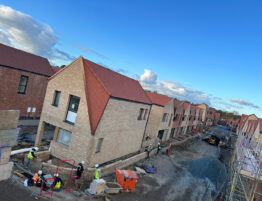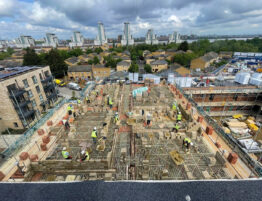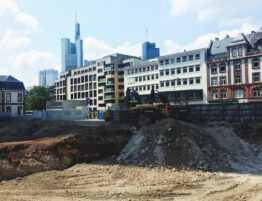
A new report shows that local authorities across England and Wales have, in their bank accounts, an estimated £2.8 billion of unused contributions from home builders.
This is money that builders contribute through what’s known as ‘Section 106’ contributions to local authorities as part of the planning agreement, the purpose of which is to fund local services and infrastructure upgrades. Find out more about how these important funds are going unspent in this week’s blog.
What is Section 106?
Section 106 forms a legal agreement between a planning authority and a developer. With the exemption of sites of ten new homes or less (five in some rural areas), Section 106 agreements require the builder to mitigate the impact of their development by contributing funds that can be invested in the local community.
The funding is generally used for local infrastructure, affordable housing, sports/ recreational/ health facilities and education provision. Each year, developers contribute around £8billion to local authorities for this purpose.
Money in the bank
A new report published earlier this week by the Home Builders Federation (HBF) suggests that a large proportion of the funds secured via Section 106 agreements is sitting unspent in the bank accounts of local councils across England and Wales.
Based on Freedom of Information responses from 171 local authorities (50% of all local authorities in England and Wales), the report shows that each council is holding onto an average of £8m. Taking that as a base figure, this would suggest that, across all local councils, there is almost £2.8bn in home builders’ contributions going unspent!
Breaking that down, it includes:
- £567m allocated for affordable housing, enough to fund the construction of nearly 7,000 desperately needed ‘social’ homes.
- £420m held in unspent education contributions which could cover training costs for 45,000 teachers.
- £384m of unspent highways contributions, enough to repair of over 6 million potholes.
- £334m in unspent social infrastructure contributions which would pay for 1,900 community games areas.
Councils who held the top three spots for having the most unspent S106 contributions were:
- South Gloucestershire Council – £58.2m
- Leeds City Council – £57.9m
- London Borough of Greenwich – £57.2m
Read the full report here.
What’s happening?
The HBF say this research shows there is a lack of capacity or unwillingness to spend developer contributions and this is preventing communities from realising the benefits of the local investment that is supposed to go hand-in-hand with house building. The inevitable consequence of that local communities often form negative perceptions about new home developments and this threatens development across England and Wales.
Calling for developers’ contributions to be spent according to their negotiated purpose, Stewart Baseley, Executive Chairman at HBF, said:
“Investment in new housing delivery brings unrivalled economic and social benefits to communities but too many of these advantages are going unseen by local people as councils fail to turn payments into the services, facilities and infrastructure that residents want. Not only is this a disservice to communities but it undermines perceptions of home building, allowing negative perceptions to persist.
“In the face of a deepening housing shortage and cost of living crisis, it has never been more important to build new homes and local people should enjoy the benefits that can bring.”
What do you think?
With the country facing a housing crisis, crumbling schools and hospitals, a lack of youth services and miles of pot-hole ridden roads, what do you think local councils should be doing with these builders’ funds.
Tell us your views over on our Facebook or LinkedIn pages.
14.09.2023
Feature image: Freepik








